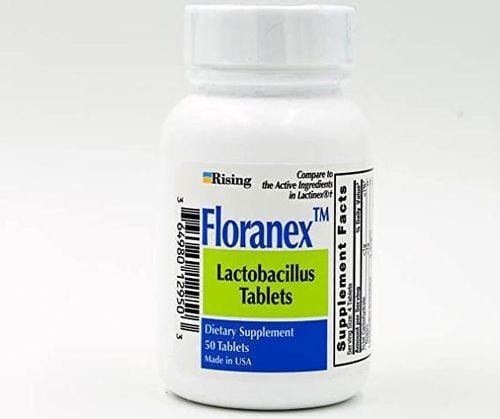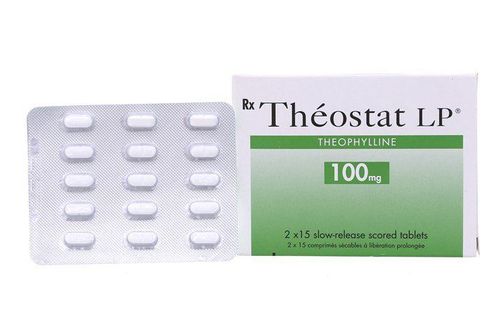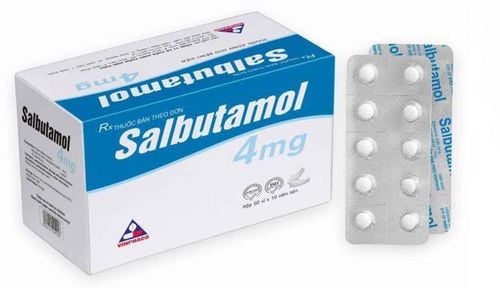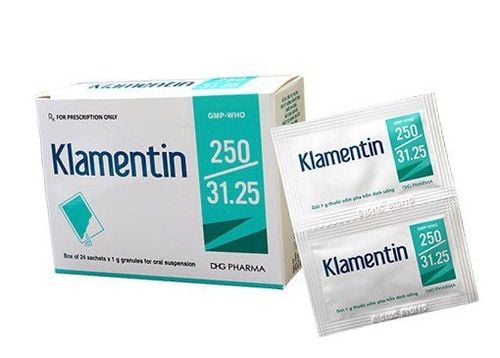This is an automatically translated article.
With the main ingredient is Cefixime, a third generation Cephalosporin antibiotic, Kivacef is often indicated for bacterial infections such as tonsillitis, urinary and genital infections, skin and soft tissue infections, typhoid and prevention of post-operative infections...1. What are the effects of Kivacef?
Kivacef medicine has the main ingredient Cefixime trihydrate 200mg. The drug is usually indicated for the treatment of mild to moderate infections such as:Ear - nose - throat infections (otitis media, pharyngitis, tonsillitis, sinusitis,...); Bronchitis, infectious bronchiectasis; Acute & chronic pneumonia; Genitourinary infections, gonorrhea; Skin and soft tissue infections; Cholangitis, cholecystitis, pyelonephritis, cystitis, gonorrhea urethritis; Prophylaxis of surgical infections; Typhoid treatment ; Scarlet fever.
2. Instructions on how to take Kivacef
Kivacef is made in the form of capsules, should be taken with food or milk to avoid stomach upset. Users should take the antibiotic Kivacef under the strict direction of their doctor. The dosage information below is for reference only:
Dosage for adults and children >12 years: Take 50-100mg x 2 times/day. The dose can be increased to 200mg twice a day; Dosage for children (from 6 months to 12 years old): Oral 8mg/kg/day, can be used once a day or divided into 2 doses. Treatment of urinary tract infections caused by gonorrhea: Take a single dose of 400mg; Note:
The doses are 12 hours apart; Depending on the type of infection, the duration of treatment should be extended by 48 - 72 hours after the symptoms of infection have disappeared; Consider reducing the dose of Kivacef in patients with renal impairment with a Cr clearance < 60 ml/min.
3. Side effects of the drug Kivacef
In addition to the effective treatment of infections, during the use of Kivacef, users may still encounter some unintended effects as follows:
Digestive disorders; Rash, urticaria, itching; Fever, joint pain; Decreased leukocytes, platelets, eosinophils; Change in liver and kidney function; Stomach pain, diarrhea; Shortness of breath, trouble swallowing, wheezing; Vaginal infection. If any serious or unusual signs are noticed during treatment with Kivacef, the patient should promptly notify the doctor for prompt help.
4. Notes when using Kivacef
Kivacef is contraindicated in the following cases:
People with hypersensitivity to any ingredient of the drug (especially Cefixime); People who are sensitive to Cephalosporin antibiotics; People with a history of anaphylaxis due to penicillin use; Pregnant & lactating women; Children under 6 months old. In addition, special care should be taken when using Kivacef for the following subjects:
Patients with renal failure; Persons with a history of hypersensitivity to penicillin; Patients with a history of stomach, intestinal, colon disease; Patients with severe renal dysfunction; Patients with a personal or family history of reactions such as: Asthma, rash, urticaria; Poor eaters, patients on parenteral nutrition, the elderly, or exhausted patients (pay special attention to this group of patients because complications from vitamin K deficiency can occur).
5. Interactions of Kivacef
During treatment, Kivacef may compete or interact when used simultaneously with food or other drugs and functional foods. For example:
Carbamazepine : Cefixime increases the concentration of the drug Carbamazepine when used concurrently; Warfarin and other anticoagulants: Concomitant use may increase prothrombin time, increase the risk of bleeding; The Cefixime component of Kivacef gave a false-positive reaction in the urine ketones test. In addition, to ensure safety when using the drug, before starting treatment of infections with Cefixime, it is necessary to carefully investigate the patient's allergy history to penicillin and other cephalosporin antibiotics because there is a risk of cross-reactivity between these drugs. beta-lactam antibiotics, including: Penicillin, Cephalosporin and Cephamycin.













